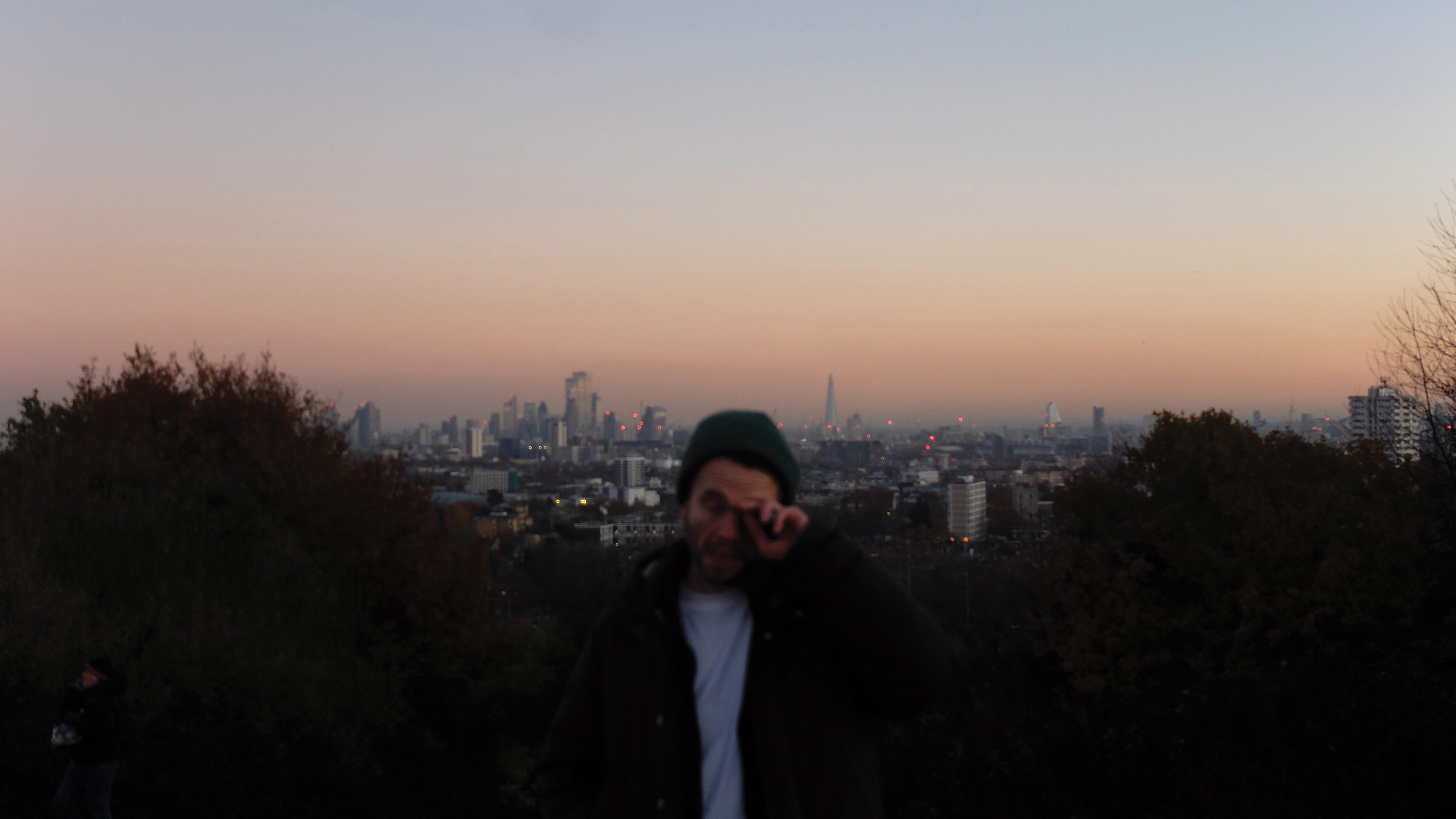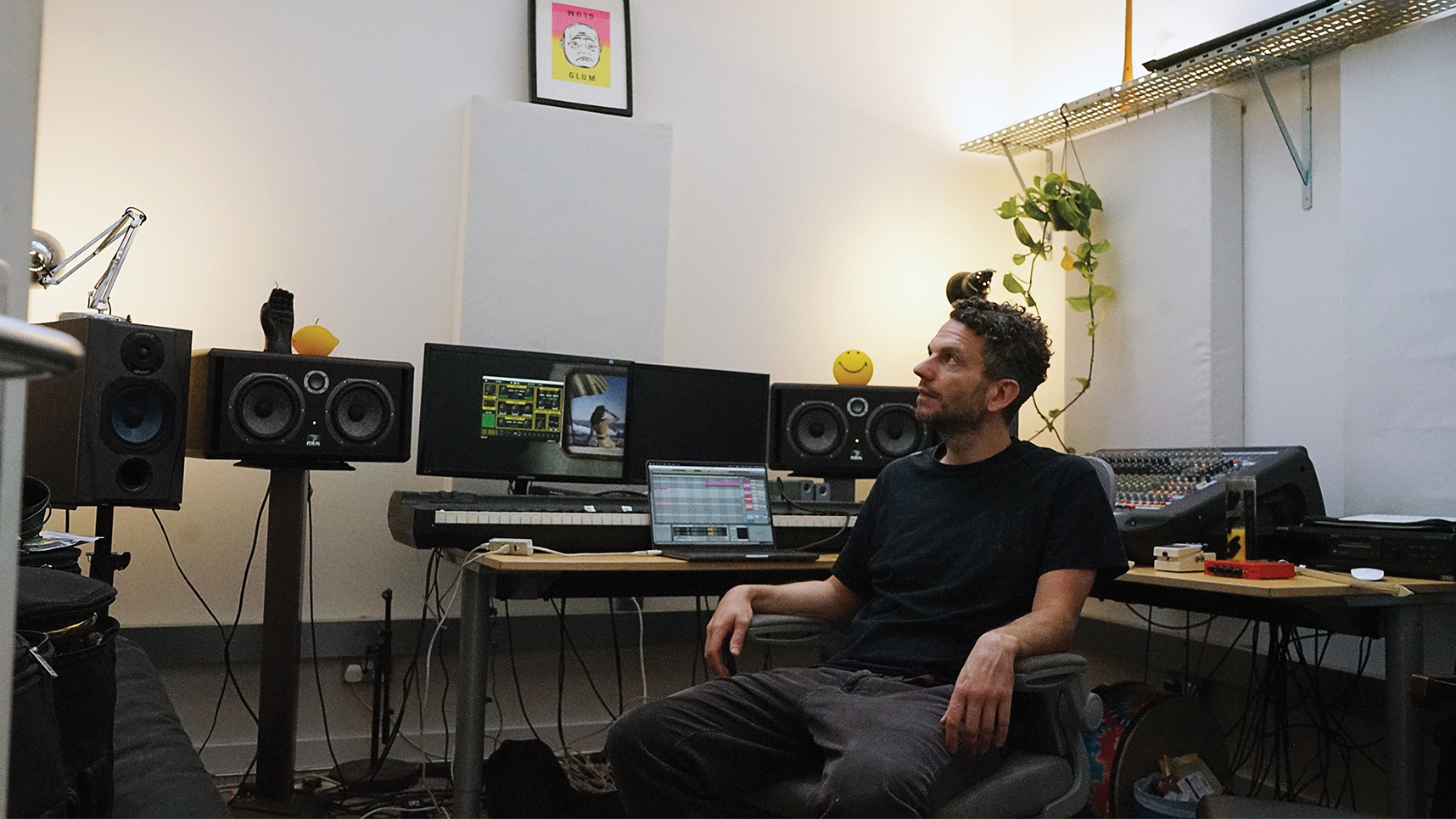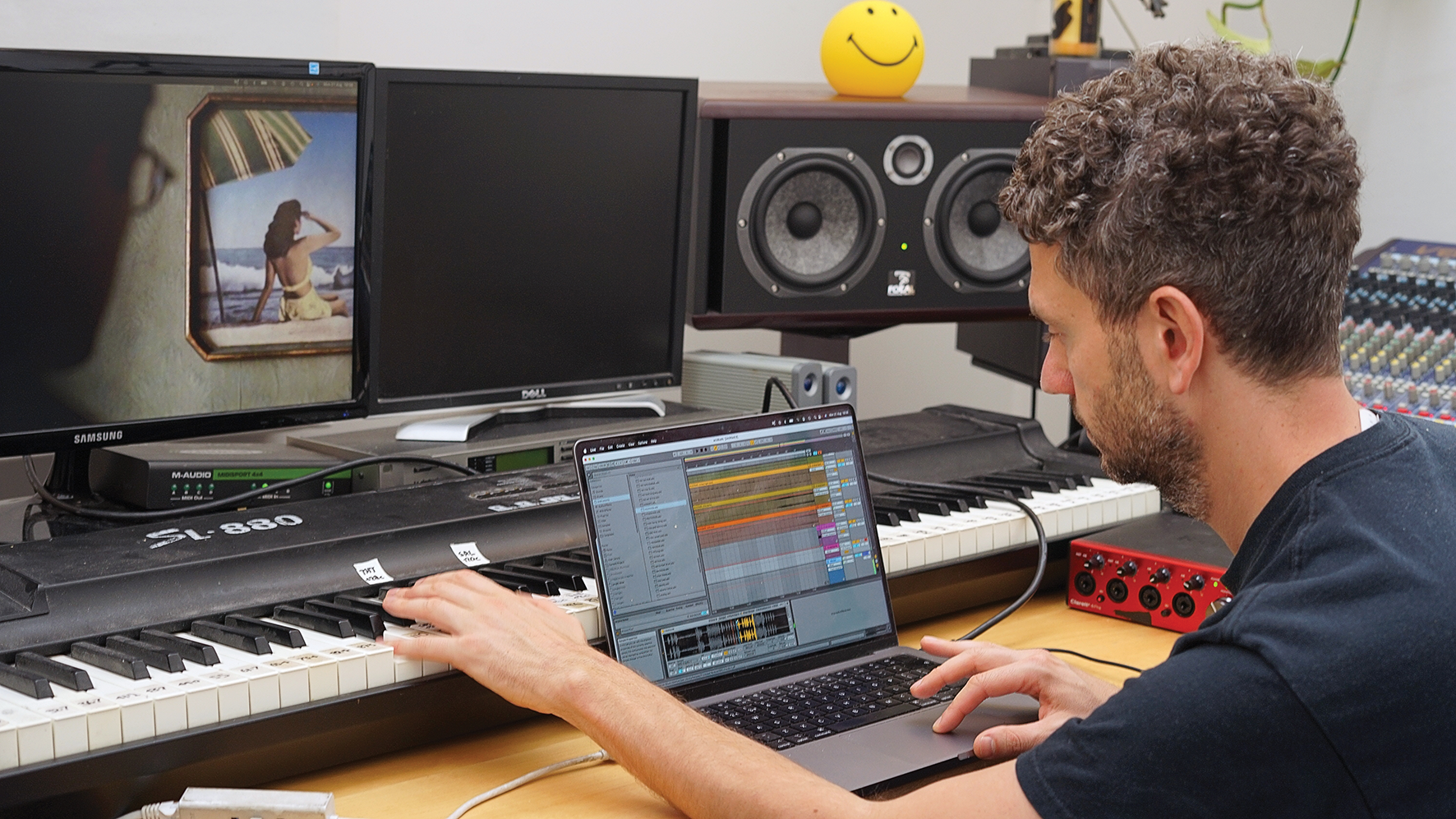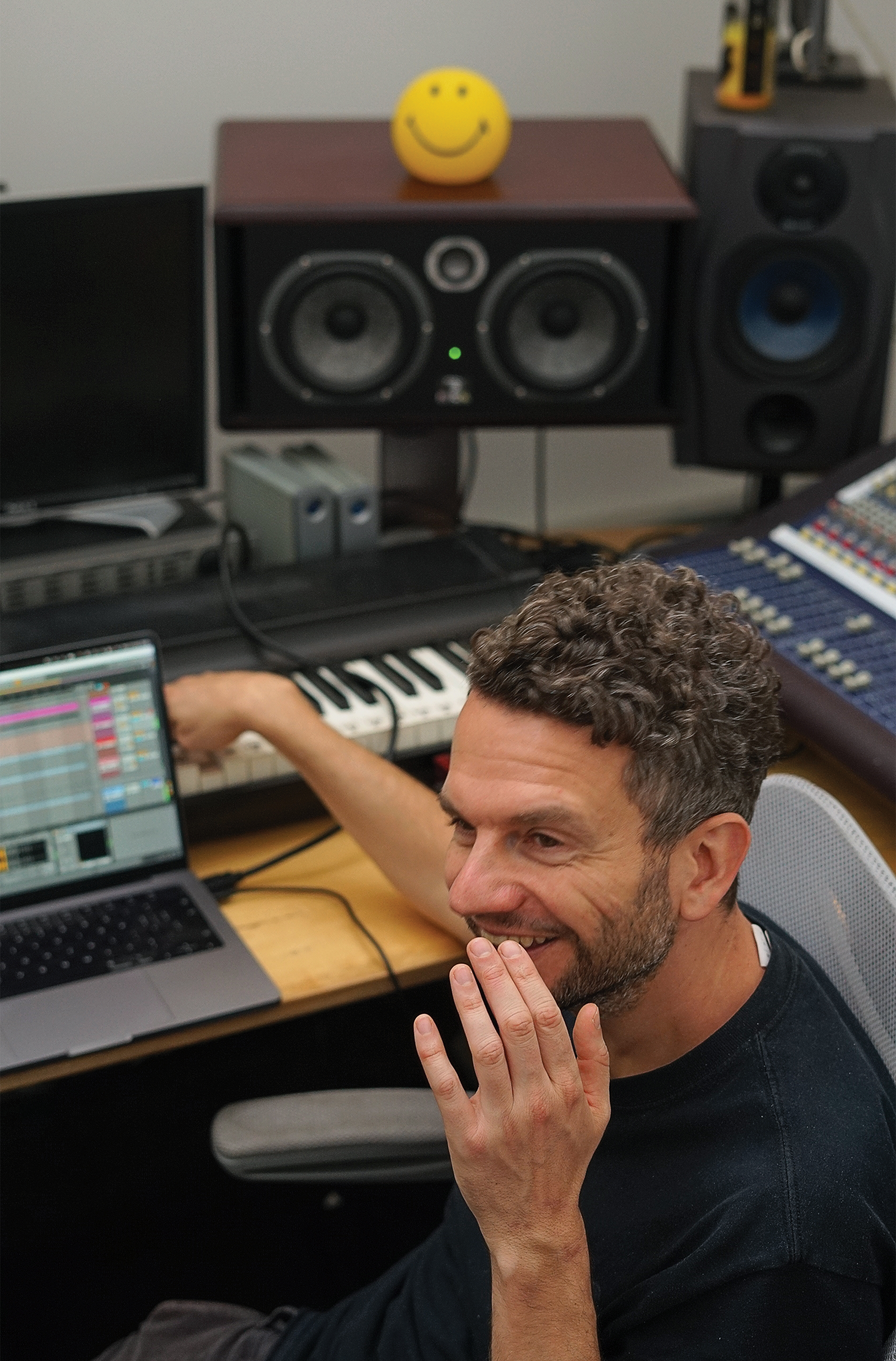Lukid: “Dance music can be a bit snobbish about melody - but for me, the marriage of rhythmic and melodic elements is where the magic happens”
Adding a lick of paint to his first new Lukid album in ten years, Danny Turner chats to Luke Blair about ditching his pursuit of perfection

Puzzling, complex and yet still oddly accessible, Lukid’s 2012 album Lonely at the Top suggested an electronic artist approaching the peak of his powers. Few might imagine, therefore, that Luke Blair would abandon returning to Lukid for a further decade.
Instead, the North London-based producer became hot property in the world of advertising sync, whilst side-stepping into the self-described functionality of drum & bass/jungle with his Refreshers side project, alongside his widely lauded collaborative work with Jackson Bailey under the name Rezzett. The only other constant has been Blair’s monthly show on NTS Radio, allowing him to keep abreast of the latest cutting-edge sounds in dub, hip-hop and electronica.
All of the above have fed into Blair’s belated return as Lukid, which serves as a timely reminder of just how comfortably he sits among his peers. Tilt is a refined and sophisticated re-arrival, with piston-like beats underpinning monochrome, sandpapered patterns and gorgeous melodic refrains.
Do you seek out the work of other artists as a form of research to keep up to date with what’s current or relevant in electronic music today?
“I guess listening to any music is research because it’s all going in and influencing me. Part of the reason I work on NTS Radio is because it forces me to find stuff that would be easy to forget if I didn’t do it for a living. But I don’t look for techniques unless I’m doing something very specific – I’m not really that technically minded, although I do genre-study the jungle stuff because it’s a bit like learning a language.”
Was composing for film and TV something you actively sought or did you suddenly find that people were approaching you for projects based on your solo work?
“That whole world is tricky to navigate because a lot of it is about who you know. In my early 20s, I was a runner for a branding agency and met a few people who went on to do film and video within the advertising world. They knew me and my music, so they’d hit me up and ask if I had anything suitable for a particular project. It’s nice to have that discipline alongside my solo stuff where there are no deadlines or briefs.”
Want all the hottest music and gear news, reviews, deals, features and more, direct to your inbox? Sign up here.
What are some of the pros and cons of making music in that world?
“It’s a good way to earn a living in music, especially as there are not that many ways of doing that these days, but you have to be willing to be very versatile, make lots of different types of music and take comments from clients who don’t really know anything about music. You also have to be willing to work quickly and be a cog in a wheel, which can be quite nice when it’s balanced against working on your own stuff.”
You have two drum & bass/jungle side projects, Refreshers and Rezzett with Jackson Bailey, yet unusually that genre of music was never an initial passion of yours?
“You’re right that I was never into one particular genre of music and I wasn’t going to clubs either, but I’ve got an older brother who was big into jungle so I’d hear a lot of it from him even though I didn’t understand the language or how to work with breaks. Then a few years ago Jackson challenged me to come up with a jungle tune. I’d been struggling to make music for a few weeks, so chopping up breaks felt new and fun compared to trying to find some really original or specific snare sound.
Chopping up breaks felt new and fun compared to trying to find some really original or specific snare sound
“I ended up making a track in four hours, which ended up being the first Refreshers tune, How Bout You? It was cool because, within jungle, I could use all these genre signifiers and not worry too much about the integrity of it. Don’t get me wrong, I’m proud of that stuff, but it’s more functional. The Rezzett stuff was mostly Jackson, who’s a bit of a genius and can knock out a jungle track in minutes. I definitely learnt a lot from seeing how he layered breaks and put stuff together.”

’90s jungle was typically built around the sound of hardware synths and samplers. Does working in that field therefore necessitate using different tools to your solo projects?
“In general, Jackson buys and sells a lot of hardware so we’ll always jam on a new bit of kit, but he also makes jungle stuff in the box using tracker software where you have all these mad numbers going down the screen. It’s a bit like looking at The Matrix. Personally, I feel I can do more within the computer, which is basically a mixture of me being lazy, tight and stuck in my ways. I’m so used to being able to edit, fine-tune and automate stuff [where] using a hardware sampler would feel like a roundabout way of getting the same result.”
The Rezzett album, Boshly, and your latest solo LP, Tilt, have both been released this year. Did you work on them simultaneously?
“The Rezzett album was finished quite a while ago. I actually moved to Lisbon in 2018 because my girlfriend was there and Jackson was already living there, so I started sharing a studio with him. We worked on the Rezzett album in 2019, Jackson left Lisbon and then I started working on Tilt, which is made up of stuff I’d been making over the past ten years or so. In between, I’d been making the Refreshers stuff, which is a fun palate-cleanser and they all seem to complement each other.”
Having taken a ten-year break from Lukid, have you found that your music has become more informed by your sound design work for various media?
“I have a big playlist that I keep of little sketches. Usually some kind of loop or a couple of sounds put together that feel like they could be the basis for a new track, but I don’t necessarily know what I’ll end up using them for; a bit of film advertising or they’ll go towards a jungle tune.
It’s all well and good having music sitting on my laptop, but what’s the point if no one else can hear it?
“If I’m not working on a particular project, I’ll try and get a couple of sketches down per day, which I add to this big playlist on my phone. It’s so easy to forget stuff you’ve done that I need to export it, have it on a listenable playlist and think of it as building up a library of work for the future.”
We read that your fear of death impels you to create – as if there’s a need to get your version of something out into the world before it’s too late?
“That’s got to be the inspiration for a lot of art, but I was finishing this album during the pandemic and, although it’s hard to remember now, there was a bit of a feeling of who knows what’s going to happen? It was a bit of a wake-up call. It’s all well and good having music sitting on my laptop, but what’s the point if no one else can hear it?
“If you call yourself a musician, you need to be putting out music. I also liked all the music I had sitting around but didn’t necessarily like what I’d released that much. If I meet someone at a party and they take my name down and listen to my stuff on Spotify, they’re going to judge me on what they hear not what I haven’t released. So yeah, I guess fear of death is still part of the motivation [laughs].”

Artists are rarely fully satisfied with what they’ve released. Are you trying to attain perfection?
“Waiting for something to be perfect is a mug’s game and kind of what led me to not releasing anything for so long. You’ll be waiting forever, so you have to accept the flaws. It’s easy to overthink things and imagine that inspiration will come along ‘one day’, but that’s not how it works – you have to force it a bit.
“I’ve perhaps avoided the technical aspect because I’ve always looked at music as an emotional thing, the problem being that the means to this emotion is through the technical. I don’t know how successful I’ve been, but I’ve always been focused on trying to make something unique that has its own mood.”
Did the starting point for Tilt always revolve around those sketches that you mentioned?
“It depended tune by tune. Some started by putting together drum sounds in Ableton Drum Rack and others started with a synth or string sound. Others started with previous sketches that I ended up resampling. I actually did that quite a lot on Tilt – in the process of making a tune that I thought was good but not that unique, I’d take it back into the Ableton sampler and work with it as if it was someone else’s tune and make something new out of it.”
Are you motivated by sound as a source or techniques you want to try related to sound design?
“A good example is a track on the album called The Great Schlep, which was made by playing around on the MIDI keyboard using a Kontakt string library on my old PC. I recorded jams that I thought sounded nice into an old tape machine separate, recorded them back out into Ableton, pitched everything down and chopped it up to make a new melody.
“I used a similar process of working with audio quite a lot. For example, the first track, End Melody, was just me having a jam and chopping it up to create a chord sequence. There’s a mode on Ableton where you can make a clip trigger the next clip, so you can create loops out of that and choose different starting points within the audio.”
The string emulations on The Great Schlep seem to be a strange combination of various processed and natural-sounding techniques?
“The samples themselves came from a library on my old PC that I don’t use anymore that had a bowing sound mixed with a touch of glissando. Part of the reason I wanted to change the pitch and add a little bit of tape saturation was because I didn’t want the samples to sound too much like a Kontakt library. Changing the pitch is a classic way of changing the frequencies enough to make things sound more interesting for the listener.”

Tape is obviously a form of hardware outboard, but then you’ve have a fascination for tape ever since finding a bag of cassettes in the street?
“More and more people are getting rid of their old tapes these days, but a long time ago I was living in Archway and found a box of them outside a neighbour’s house. Most of it was full of weird audio books and language tapes, but one was marked ‘DISCO’, which I ended up sampling for a track on my last album. I’ve tried to avoid using tape saturation on Tilt because you can get addicted to that type of sound. The only other bit of hardware I used was a Boss guitar pedal.”
Lukid is sometimes comparable to Autechre, yet tracks Belly 1 and 2 have these beautifully syncopated melodies; something Autechre would probably never allow themselves to do. Do you have a view on that?
“Well first of all, thank you very much because I’m glad you like those tracks for that reason; I’m a big melody man and that’s what I was aiming for. Dance music can be a bit snobbish in that regard but, for me, the marriage of rhythmic and melodic elements is where the magic happens and is often the moment when I know I have something. I love Autechre and a lot of their earlier work was quite melodic, for example, Drane 2 was always a big track for me. As a young music maker, I held it up there as being kind of what I wanted to achieve.”
You seem to deliberately combine frayed and melodic sounds so that one accentuates the other?
“That’s where the happy accidents come from. You’re putting these disparate elements together to see how they play off each other. The two tracks you mention came from the same initial track that I’d made using a bell sound sample, so Belly 1 and 2 were abstractions of that and feature the same kinds of melodies but with different variations.”
You also do a lot of vocal sampling…
“I have a folder full of acapellas and little bits of voice that I’ve found, which I guess has become a shortcut to adding a human element or extra layer of melody. Sometimes I worry that I use vocals in that way too much, but adding in a vocal snippet does feel like a sprinkle of salt or the cherry on top of a track. I love songs and music with vocals, so maybe it’s just a way for me to cheat without having to work with a vocalist, although that’s something I’d love to do.”
Are you using any other third-party plugins?
“Because a lot of this album was made on an old PC that I somehow managed to get over to Lisbon, it’s hard to remember, but I did used to use a lot of Native Instruments and Arturia plugins. I initially used Ableton as an instrument to chop up audio that I’d then record into my PC, until a few years ago when I started using it to arrange full-time.
They sometimes need something very specific-sounding, so I’ll have to try and find the best banjo plugin out there. Because of that, I have all these very weird plugins
“A good plugin that I got recently is the M-Tron Pro emulator, which is an updated version of the original Mellotron sampler that The Beatles used for Strawberry Fields Forever. I also use the Surge XT plugin quite a lot, various free VTSs and Kontakt – especially for the film and commercial work. They sometimes need something very specific-sounding, like a banjo, so I’ll have to try and find the best banjo plugin out there. Because of that, I have all these very weird plugins on Ableton that often end up making their way onto a Lukid track somehow.”
Is there anything particularly about making music that makes you frustrated?
“The only time I get frustrated is when I feel like I have a good basis for a track but can’t find the key to unlock it and have to wait for the right elements to fall into place. When that works, I can move to the arrangement and mixing stage, although mixing for me is all just part of making a track. I always get confused when people talk about ‘mixdowns’ – I guess that’s not how I work [laughs].”

